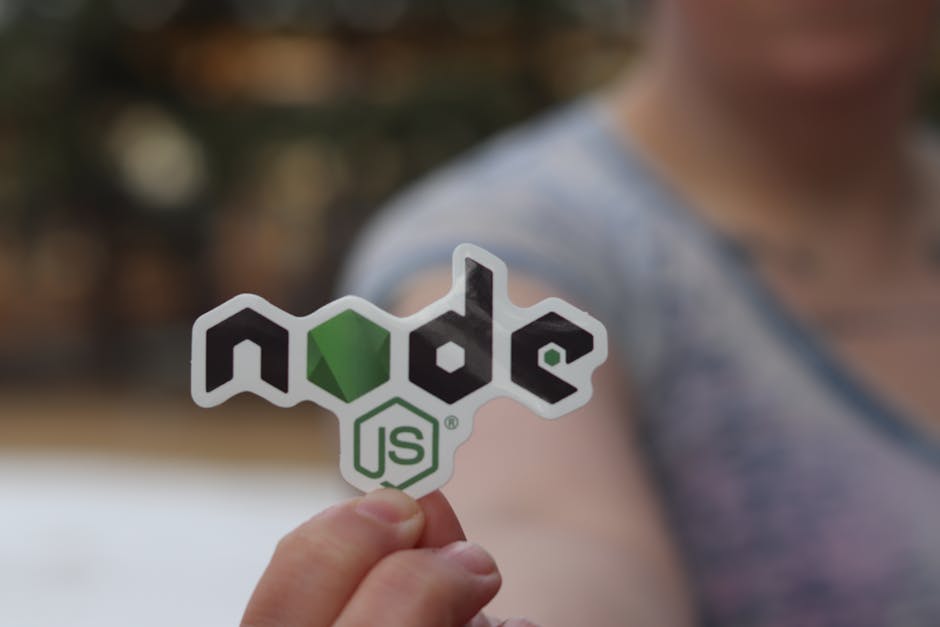
Node.js is a high-performance JavaScript runtime based on Chrome’s V8 JavaScript engine. It was initially published in 2009 and has since become one of the most popular platforms for developing server-side applications. We will introduce you to Node.js and highlight why it is worth considering for your next project in this post.
What is Node.js?
Node.js is an open-source, cross-platform JavaScript runtime environment that allows JavaScript code to be executed outside of a browser. Its event-driven, non-blocking I/O style makes it an excellent choice for developing scalable, high-performance network applications.
Why use Node.js?
There are various reasons why you should choose Node.js for your next project:
- It’s quick: Node.js makes use of the V8 JavaScript engine, which is also utilized by Google Chrome. This implies it is exceptionally quick and efficient, both of which are required for developing high-performance network applications.
- It’s simple to learn: If you already know JavaScript, you’ll have no trouble getting started with Node.js. This makes it an excellent alternative for web developers looking to broaden their skill set.
- It’s adaptable: Node.js may be used for a variety of applications, including web apps, network applications, and more. This makes it an excellent alternative for any project requiring quick and efficient back-end processing.
Features of Node.js
- Asynchronous and Event-Driven: Because Node.js employs an event-driven, non-blocking I/O style, it is an excellent choice for developing scalable, high-performance network applications.
- Concurrency: Despite being single-threaded, Node.js can process numerous requests simultaneously, making it incredibly efficient and scalable.
- Built-in Library Support: Node.js has a large library of modules that make it simple to construct a variety of apps. The HTTP module, the File System module, and the URL module are among the most popular.
Advantages of Node.js
- Scalability is one of the most significant advantages of Node.js. As a result, it is an excellent solution for developing high-traffic online applications.
- Performance: Because Node.js is quick and efficient, it is an excellent choice for developing high-performance network applications.
- Community Support: Because Node.js has a huge and active community, there are many resources accessible for learning and troubleshooting.
When to use Node.js?
Node.js is an excellent solution for any project requiring quick and efficient back-end processing. Some of the most frequent Node.js use cases are:
- Node.js may be used to create scalable, high-performance web applications.
- Node.js is an excellent alternative for developing network applications such as chat apps, real-time data applications, and others.
- Microservices: Node.js is ideal for developing microservices, which are tiny, autonomous services that collaborate to complete a given purpose.
When not to use Node.js?
While Node.js is an excellent choice for many projects, it may not be the ideal choice for all. The following are some of the most prevalent instances in which you might wish to investigate a new technology:
- CPU-intensive activities: Node.js is unsuitable for CPU-intensive operations like image or video processing.
- Strong guarantees: Because Node.js does not give strong assurances about the sequencing of events, it is less appropriate for applications that demand strong guarantees.
Installing and setting up Node.js
Node.js is available for installation on a variety of operating systems, including Windows, macOS, and Linux.
Note: you can download NodeJS here.
The installation process for Node.js is straightforward and can be completed in just a few steps.
For Windows:
- Double-click the Node.js installer that you downloaded from the official website.
- Follow the on-screen instructions to complete the installation process.
- After the installation is complete, you can check the version of Node.js that is installed by opening the Command Prompt and typing
node -vand press enter.
For macOS:
- Double-click the Node.js installer that you downloaded from the official website.
- Follow the on-screen instructions to complete the installation process.
- After the installation is complete, you can check the version of Node.js that is installed by opening the Terminal and typing
node -vand press enter.
For Linux:
- Open the Terminal and navigate to the directory where you have saved the Node.js installer.
- Type the following command to run the installer:
sudo apt install nodejsand press enter. - After the installation is complete, you can check the version of Node.js that is installed by typing
node -vin the Terminal.
Setting Up Node.js
After the installation is complete, you may begin configuring Node.js. You may begin by creating a new project directory and launching the project with npm (Node Package Manager).
- Open the Terminal or Command Prompt and navigate to the directory where you want to create your project.
- Type the following command to initialize your project:
npm initand press enter. - Fill in the details prompted by npm, such as the name of the project, version, description, etc.
- After completing the prompts, npm will generate a
package.jsonfile, which contains all the information about your project.
You are now ready to start building server-side applications using Node.js.
Q&A
Q: What is Node.js used for?
A: Node.js is used for building server-side applications using JavaScript. It is known for its fast and efficient performance and ease of use.
Q: What are the prerequisites for installing Node.js?
A: You need a computer running Windows, macOS, or Linux and an internet connection.
Q: How do I check the version of Node.js that is installed on my computer?
A: You can check the version of Node.js by opening the Terminal or Command Prompt and typing node -v and pressing enter.
node -v